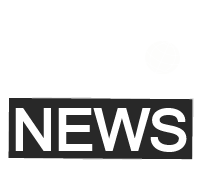Reviews
Why healthcare staffing platforms are overtaking agency staffing

Do you think a traditional staffing agency is the ultimate solution for your facility’s contingent workforce needs? Think again: The landscape is shifting.
Most facilities are changing the way they staff. For facilities, agencies are no longer sufficient.
In an ever-changing healthcare environment, staffing platforms are revolutionizing how facilities manage their contingent workforce. Agencies are being replaced by new digital platforms that bring greater efficiency and transparency to staffing management.
Some of the main reasons for this change are that facilities can leverage technology-driven platforms so that the contingent workforce acquisition process is more:
- Scalable
- Flexible
- Cost-effective
This is not just a technological advancement but a groundbreaking shift in workforce planning for the specific purpose of addressing the acute and fluctuating requirements of healthcare establishments in this new era.
The role of temporary staffing in healthcare
Contingent staffing is a critical answer for healthcare providers with fluctuating patient volumes, seasonal surges, or unexpected staff shortages. Temporary staffing plays a big role in:
- Covering unexpected staff shortages due to illness or emergencies
- Supporting patient volume spikes during pandemics or outbreaks
- Filling gaps caused by employee leave or vacation
- Facilitating talent evaluation by serving as a pipeline for potential hires
Contingent staffing ensures continuous patient care and business continuity. It also allows facilities to remain agile without the financial burden of being overstaffed during low census periods, making room for best-fit resource allocation and cost management.
With pressures ranging from aging populations, increased chronic conditions, and workforce shortages, healthcare organizations are relying increasingly on temporary staffing to maintain quality care delivery.
However, the shortcomings of the traditional staffing agency vs. platform model have made apparent the need to move from a “vendor-managed model” to a “client-controlled marketplace.”
What are modern healthcare staffing platforms?
Healthcare staffing platforms are web-based, technology-enabled solutions that connect medical organizations with vetted temporary healthcare professionals.
These platforms differ from traditional staffing agencies in that they adopt an online marketplace model where healthcare organizations post shifts or staffing needs and pre-screened clinicians can pick up assignments in real time.
These apps or websites employ sophisticated functionalities such as:
- Credential verification and ongoing licensing checks to ensure compliance
- Scheduling and shift management in real time
- Pricing transparency and equitable pricing models
- Extended availability to meet immediate staffing demands
The expansion of healthcare staffing platforms aligns with the broader trend toward digital health transformation, enabling faster and more agile on-demand staffing platform solutions.
How digital staffing drives efficiency and savings
There are several reasons why healthcare staffing platforms are preferred over traditional agencies.
Cost transparency and lower markups/overhead
Traditional staffing agencies have large markups to cover their overhead, costs that they ultimately transfer to healthcare facilities. Healthcare staffing platforms provide pricing transparency, which allows organizations to budget for contingent staffing with predictive accuracy, transforming costs from unpredictable liabilities into manageable operational expenses.
For example, healthcare staffing platforms like Nursa adopt a 1099 contractor model that minimizes employment liabilities, making the contingent staffing platform affordable without compromising quality. This model creates a win-win scenario, enabling healthcare organizations to optimize their workforce planning for contingent staffing while reducing or eliminating expenses, such as markups and administrative fees, without compromising quality or compliance.
Platforms save on administrative costs by removing middlemen
One of the biggest administrative burdens with staffing agencies is the constant back-and-forth communication—screening applicants, renegotiating rates, coordinating shifts, and handling paperwork. Platforms alleviate much of this by:
- Offering self-service credential verification
- Allowing facilities to post shifts and qualified clinicians to claim jobs directly
- Streamlining digital onboarding, time tracking, and invoicing
This automation reduces the workload of staffing departments, freeing human resources to focus on strategic workforce planning rather than day-to-day administrative tasks.
Accelerating from days to minutes with on-demand staffing
One of the largest disadvantages of agencies is the time lag—administrative approval for placements often takes days. Nurse staffing platforms and sites accelerate this process with on-demand solutions. Facilities can post open shifts instantly, and qualified healthcare professionals can be scheduled in hours or minutes rather than days.
This speed is critical in the healthcare sector, where emergency absenteeism or patient surges require instant and reliable staffing arrangements to avoid compromised care.
Built-in credentialing, compliance, and risk mitigation
Licensure, certification, background checks, and other regulatory compliance requirements are non-negotiable in healthcare. Temporary staffing agencies have traditionally relied on time-consuming manual credential verification, which creates delays.
In contrast, healthcare staffing platforms often feature automatic credential verification and background checks within their technical infrastructure.
Operational ease & user experience
Staffing platform user experiences are easy and quick with:
- Easy shift management dashboards
- Reminders and notifications to reduce no-shows
- Easy communication channels connecting facilities and providers directly
The ease of use helps healthcare organizations requiring contingent workers and clinicians seeking flexible work opportunities.
Flexibility, scalability & control
Healthcare staffing websites offer unprecedented flexibility. Websites enable facilities to augment or reduce their contingent labor in response to actual demand without committing to rigid contracts or heavy minimums typical of agencies.
Platforms also give facilities greater control over staffing choices. Facilities can choose candidates based on specialty, experience, shift preference, and even prior facility reviews, offering a better match between the clinician and the facility’s culture.
Adopting a facility-first approach to staffing
Healthcare staffing platforms succeed because they take a facility-first approach—they serve the unique needs and processes of healthcare organizations rather than the supplier-based selling model common in agencies. By focusing on the client’s business realities, online staffing platforms build long-term relationships rather than transactional ones, fostering trust and continuous improvement.
Healthcare’s growing need for agility, transparency, and efficiency makes platforms a more effective choice than conventional staffing agencies. As digital transformation accelerates in healthcare, these platforms are leading the charge in revolutionizing how hospitals and clinics manage contingent staffing, ushering in a new era of smarter, faster, and clinician-empowered workforce planning.

-

 Legal6 days ago
Legal6 days agoMichigan man JD Vance sentenced to 2 years for threatening Trump and JD Vance
-

 Politics1 week ago
Politics1 week agoU.S. to designate Maduro-linked Cartel de los Soles as terrorist organization
-

 Health7 days ago
Health7 days agoCambodia reports fatal H5N1 bird flu case in 22-year-old man
-

 World4 days ago
World4 days agoHurricane Melissa registered 252 mph wind gust, breaking global record
-

 Legal4 days ago
Legal4 days agoWoman in critical condition after being set on fire on Chicago train
-

 Politics1 week ago
Politics1 week agoEpstein survivors release PSA calling on Congress to release all files
-

 Legal4 days ago
Legal4 days ago1 dead, 2 injured in shooting at Dallas Walmart parking lot
-

 Legal3 days ago
Legal3 days agoSuspect in San Diego stabbing shot by authorities after fleeing into Mexico




